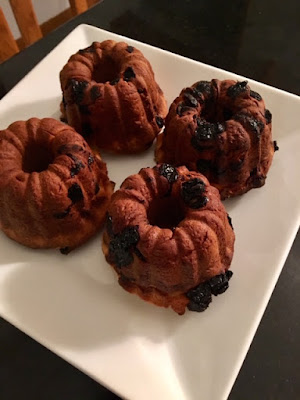When your child becomes an ex-pat in another country, f you're very lucky, your child will take you on adventures that you might have missed along the way.
The fairy-tale lover in me has always wanted to experience the Christmas markets in Germany. The nooks and crannies, the nearby gnarled woods, the light in the dark and the magical occurrences that all seem possible this time of year.
And it happened.
Strasbourg: On the border with Germany, it is the oldest Christmas Market in Europe. Originally called the Saint Nicholas Market, it was renamed when a Reformation preacher took umbrage of having a Christmas Market named for an outlawed patron Saint. (Heavens to Betsy!)
Chandeliers in Baccarat crystal guide you to the Place de la Cathedrale, where the main market is. It's all flight and fancy. It's hard to make it to the main market, because you have to stop at every window. Every. Single One.
The Charcuterie knows what they are about.
Outside the Cathedral, there is the usual array of ornaments (yes, I bought some), cookies (yes, we ate some), nuts, Gluhwein (yes, we drank some) and artisan gifts crafted from wood and stone.
And then there is this tree. The story behind the magic is here.
After Strasbourg, we went to Matthew's "home" town of Quedlinburg. It's where I first fell in love with the Moravian star also knows as the "Herrnhuter." It's origins come from Saxony (where Quedlinburg is located). Of course, it also has a story. Find it here.
I love the smaller towns and their personalities. While Strasbourg is adorned with crystal, Quedlinburg is all about the nearby forests and Harz mountains. Timber and greens are everywhere.
You will not leave hungry.
You will be filled with music.
We took a side trip to Wernigerode near the Harz mountains. We climbed up (and up and up and up) to the castle on top of the town. It was a hike. But then there are the rewards:
The market was just getting going.
And there was Gluhwein to keep you warm.
We went to the Advent Fair in Quedlinburg. Every alley, every small park, every groove called to you with warm lights, hearty meats, wine, beer, and hand-crafted items.
Magical.
As is my way, I relive this memories with food because as much as I love the travel, I am also more than 50% "There's No Place Like Home." Home incorporates where you've been and who you are now.
German food has a lot in common with Minnesota. It's hearty for the winter. It's yeasty and earthy and is fond of calories. The Kugelhopf many have originated in Vienna, but Alsace upped their game and it is one of the most traditional Christmas foods in the region. They use a Kugelhopf pan (I used a Bundt). It's easy to make even if you're afraid of yeast (I murder yeast). I did the minimum cooking time and they were darker than I wanted. But live and learn and live to bake again.
Ingredients (from Epicurious) - 8-10 servings
- 1 1/2 teaspoons active dry yeast (less than 1 envelope)
- 2 tablespoons warm water (105–115°F)
- 1 cup whole milk
- 7 tablespoons unsalted butter, cut into tablespoon pieces and softened
- 6 tablespoons granulated sugar
- 3 3/4 cups all-purpose flour
- 1 teaspoon salt
- 2 large eggs
- 1 1/2 cups golden raisins (In Alsace, they marinate the raisins in kirsch)
- 1 teaspoon finely grated fresh orange or lemon zest
- About 20 whole blanched almonds (1/2 ounces) (I didn't use, didn't work with mini-bundt pan)
- 1 tablespoon confectioners sugar
Preparation
- Stir together yeast and water in a small bowl and let stand until foamy, 5 to 10 minutes. (If mixture doesn't foam, discard and start over with new yeast. (Ha! I did that!)
- Heat milk with 6 tablespoons butter and granulated sugar over low heat, stirring, until mixture is warm (105 to 115°F), butter is melted, and sugar is dissolved.
- Sift together flour and salt into bowl of standing mixer. Make a well in flour and add yeast mixture. Add warm milk in a slow stream, mixing at low speed with paddle attachment. Increase speed to medium and beat in eggs 1 at a time, then beat in raisins and zest. Continue to beat until dough is smooth and elastic, about 5 minutes. (Dough will be very sticky.)
- Butter kugelhopf mold with remaining tablespoon butter. (I use Pam) Put 1 almond in each depression in bottom of mold (the almonds are only decorative; you can skip them altogether if your mold has no depressions), then scrape spoonfuls of dough evenly into mold (dough will be very elastic). Cover top of mold with oiled plastic wrap and a kitchen towel and let dough rise in a warm place until it fills pan, about 2 hours.
- Preheat oven to 400°F.
- Remove towel from kugelhopf and gently peel off plastic wrap. Bake kugelhopf in middle of oven 15 minutes, then loosely cover mold with foil and continue to bake until golden and a tester inserted in center comes out clean, 20 to 25 minutes more. (20 minutes was too long for my oven. I would check at fifteen minutes even if you use a light-colored pan). Cool in pan 2 minutes, then invert cake onto a rack to cool completely, about 1 hour. Dust with confectioners sugar.
Cooks' note:
· Kugelhopf is best eaten the same day it's made; however, leftovers are delicious toasted.
· Use a light-colored metal pan. Because they retain more heat, dark metal pans, including nonstick, will likely make your baked goods darker and decrease the cooking times.
· Use a light-colored metal pan. Because they retain more heat, dark metal pans, including nonstick, will likely make your baked goods darker and decrease the cooking times.
Wishing you holiday enchantment and wonders and goodness in 2019.









































